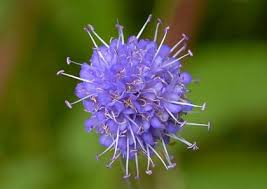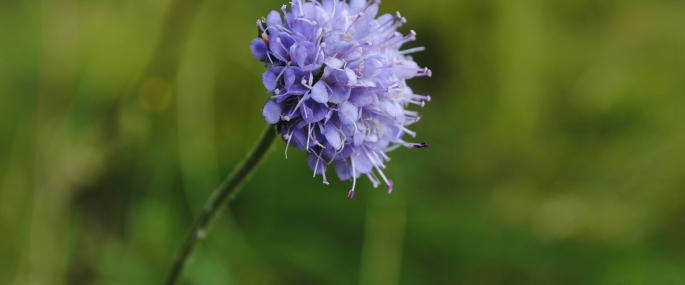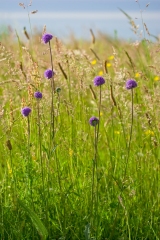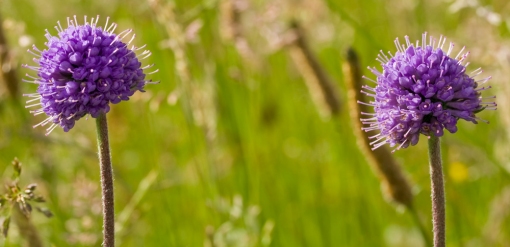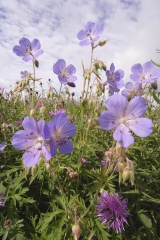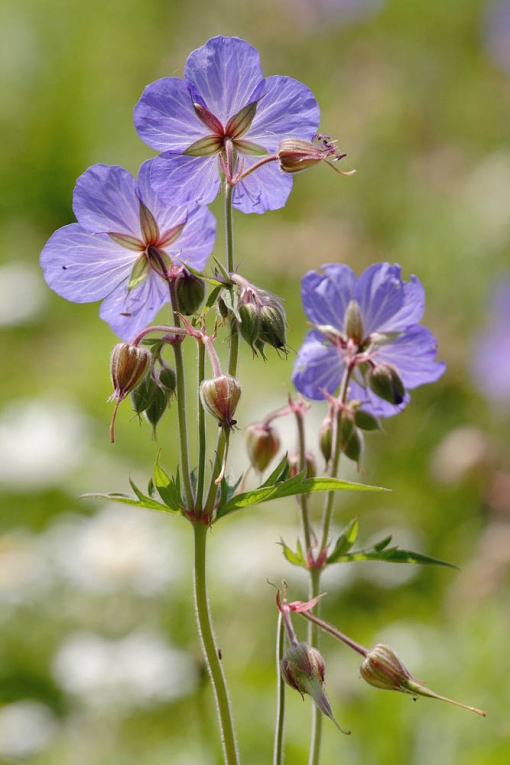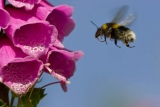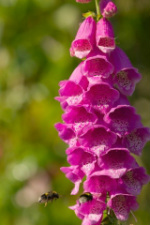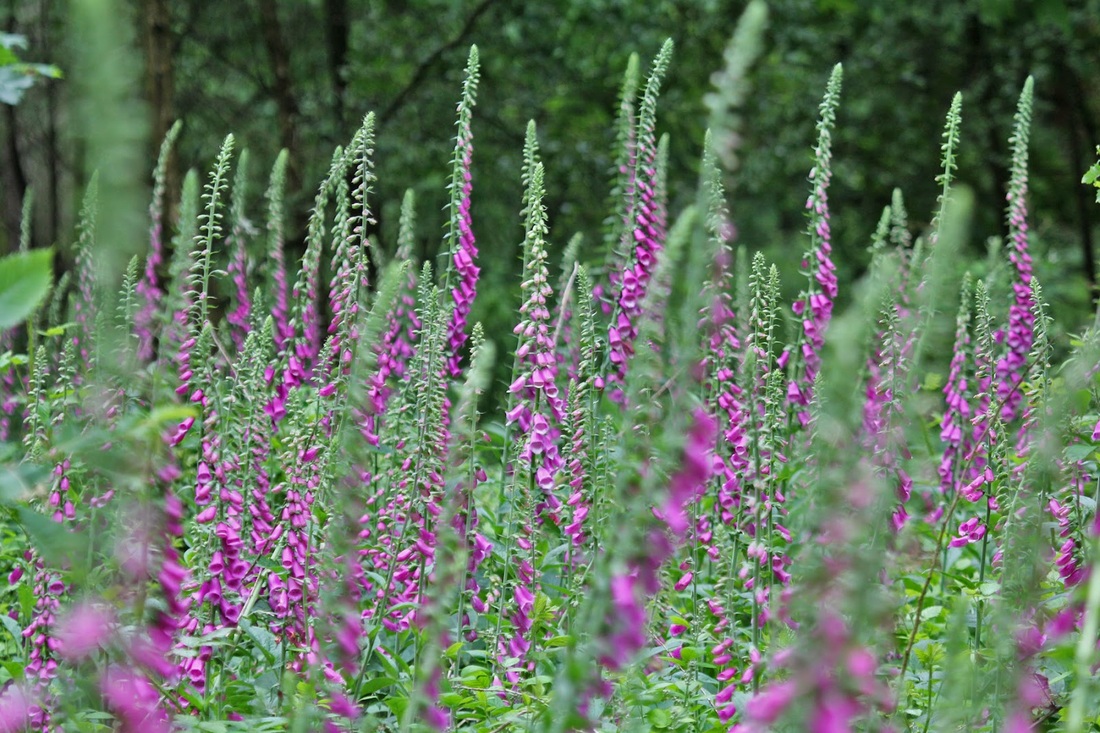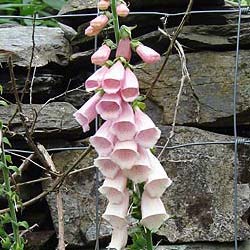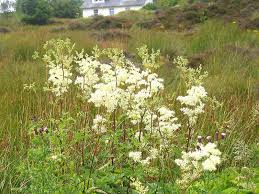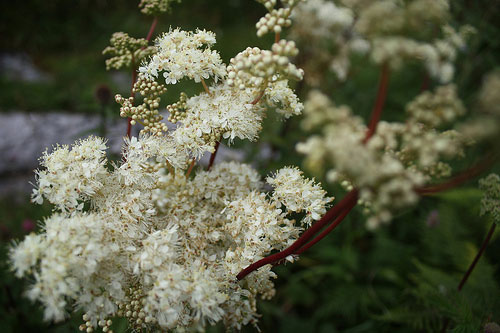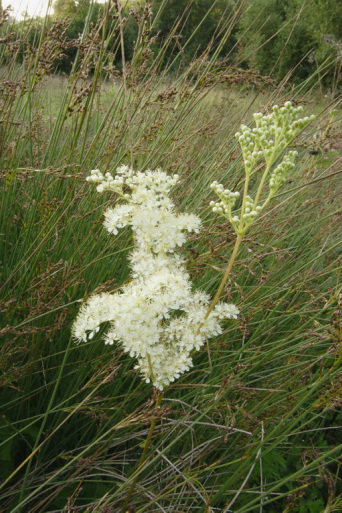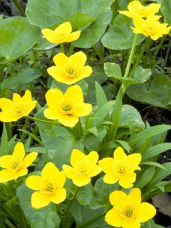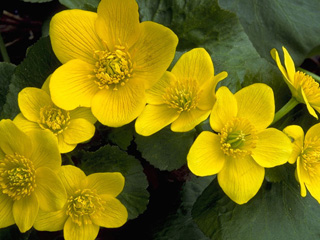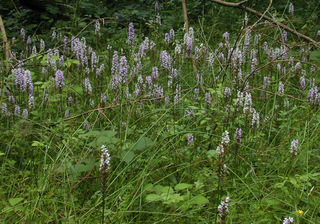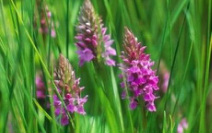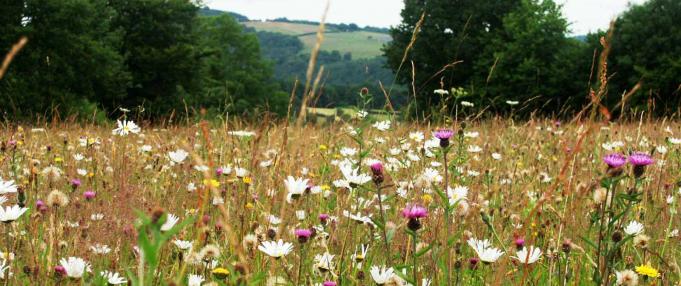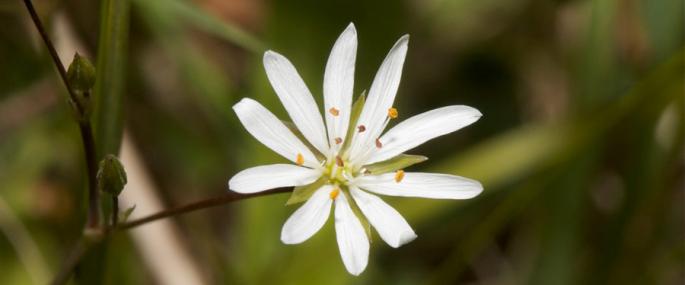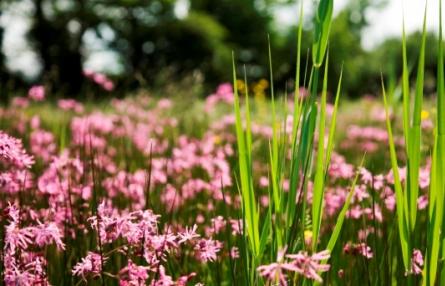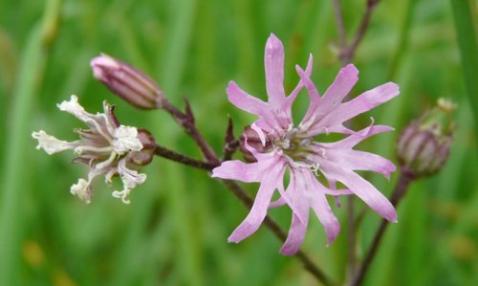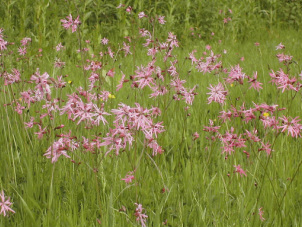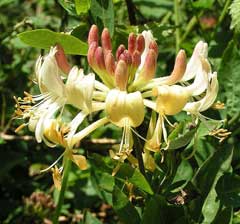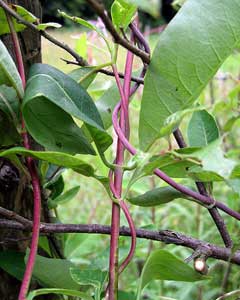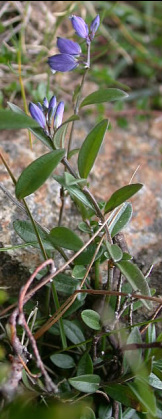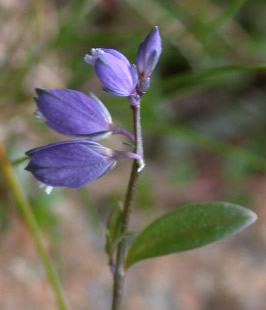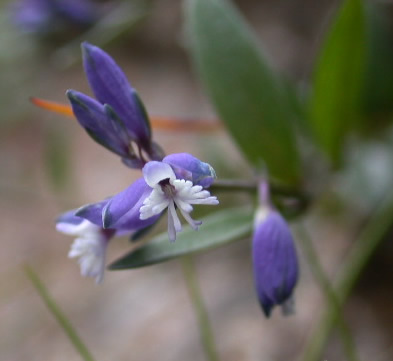Wild flowers to be found at Blackcleugh
Devil's-bit Scabious - Succisa pratensis
|
Devil's-bit scabious is so named because its roots end abruptly as though bitten off by the devil. It has a distinctive dark violet-blue, roundish ‘pincushion’ flower-head backed by green bracts. The leaves of the basal rosette are elliptical, dark green and often blotched with purple whilst the few on the stem are narrower and occasionally toothed. Flowers appear from June to October. |
|
Habitat Information
Devil's-bit scabious is a slow growing, native perennial of damp to reasonably free-draining soils with a preference for those that are neutral to mildly acidic. It exploits areas where more dominate species are held in check either through grazing pressure or low fertility and is found in a range of habitats including hay meadows, damp pasture, woodland rides, heaths and mires. Devil's-bit scabious provides nectar for hoverflies, bees and butterflies, and is famously the larval food plant of the rare marsh fritillary. |
Meadow Cranesbill - Geranium pratense
|
This familiar and handsome plant is the parent to many garden varieties of hardy geranium. A medium to tall grassland perennial with deeply cut leaves and long, hairy and frequently reddish stems. The flowers, which are out from June to September, consist of five un-notched violet blue petals.
Habitat Information Meadow cranesbill is a perennial, characteristic of rough grassland such as verges and stream sides and of damp hay meadows and lightly grazed pastures. It prefers but is not exclusive to calcareous soils. A native found throughout most of Great Britain except for the north west of Scotland but absent from Ireland. |
Foxglove - Digitalis purpurea
|
Foxglove is an unmistakeable and stately biennial or short lived perennial with a basal rosette of soft, downy and wrinkled leaves and a tall, un-branched spike of bright pinkish purple (or sometimes white) flowers.
Habitat Information This winter-green, rosette forming perennial specialises in exploiting disturbed acidic soils in lightly shaded situations. So although most commonly associated with coppiced or open woodland it is equally at home on river banks, rocky slopes, sea-cliffs (see main photograph), walls and waste land. On these disturbed sites taller more dominant species usually take over within a few years. Foxglove copes by producing copious quantities of seed (more than 70000 seeds per plant) which can remain viable in the soil for many years. This seed requires light in order to germinate and so remains dormant until there is another episode of disturbance and conditions are right for the next generation of plants to become established. Foxglove flowers are particularly attractive to bumble bees as a source of pollen and nectar and as an overnight roosting site. |
Meadowsweet - Filipendula ulmaria
|
Habitat Information
A tall perennial herb of damp or wet habitats, on moderately fertile, neutral or calcareous soil. It is, however, absent from sites that are constantly waterlogged and prefers those areas where water levels fluctuate. Around ponds and lakes it is found in the transition from wet to dry soils. Habitats include wet woodlands, damp meadows, tall-herb fens, ditches and ponds. It grows rapidly in the spring reaching full height in July. In open sites large quantities of seed are produced. Seeds can float for several weeks and are an important means of colonising water systems. In shadier or more established areas regeneration and spread happens by means of creeping rhizomes. The flower heads of Meadowsweet are rich in salicylic acid, the chemical which lead to the discovery of acetylsalicylic acid, more commonly known as Aspirin. In fact the name Aspirin derived from the old Latin name of Meadowsweet Spiraea ulmaria. |
Marsh Marigold - Caltha palustris
|
Habitat Information
Marsh marigold is a long lived perennial (up to 50 years) found in a variety of wet habitats with a preference for alkaline to neutral soils and avoiding strongly acidic ones. It is characteristic of conditions where dominance from other plants is constrained by summer shade and winter flooding and is found in habitats such as alder carr, wet meadows and the edges of rivers, streams, ponds, ditches and lakes. |
Common Spotted Orchid - Dactylorhiza fuchsii
|
The Common Spotted orchid is the most common of all UK orchids and the one you are most likely to see. It grows in many different habitats including woodland, roadside verges, hedgerows, old quarries, sand dunes and marshes; sometimes so many flowers appear together that they carpet an area with their delicate, pale pink spikes. It is in bloom between June and August.
|
|
How to identify
The Common Spotted orchid gets its name from its leaves which are green with abundant purplish oval spots. They form a rosette at ground level before the flower spike appears; narrower leaves sheath the stem. The flowers range from white and pale pink through to purple, but have distinctive darker pink spots and stripes on their three-lobed lips. The flowers are densely packed in short, cone-shaped clusters. |
Lesser Stitchwort - Stellaria graminea
|
A perennial wildflower that forms low clumps amongst grasses and bears many small white flowers.
How to identify The flowers have long, narrow white petals alternating with long green sepals. The leaves are un-stalked and narrow. The flowers are much smaller than greater stitchwort and the stalks are smooth. The flower looks like it has ten petals but actually it has only five, which are lobed almost until the base. |
Ragged Robin - Lychnis flos-cuculi
Common Honeysuckle - Lonicera pericymenum
|
A vigorous honeysuckle with large cartwheel-shaped flower-heads made up of rings of curved, almost tubular shaped individual flowers, which open white, but often red-flushed, for most of the summer. The plants are vigorous twiners that climb rapidly up trellis or over arches, where they associate well with climbing roses or other varieties of honeysuckle. They are also superb trained up into trees or covering old tree stumps. Plant so the roots are in shade but the stems and flowers can grow out into sun.
|
Heath Milkwort - Polygala serpyllifolia
|
Common in wet heathery ground. Flowers c 5.5 mm long Flowers very similar to Common Milkwort, but normally not more than 8 per stem, though in some populations there are up to 17. The lower leaves are opposite each other and become very crowded towards the base. (Plant may have some stems on which no opposite leaves can be found). Habitat is a good guide as this plant likes wet acid ground and Common Milkwort like dry neutral to calcareous ground. Other features: Flowers normally dark blue but can often be found pink, white or pale blue, or bicoloured as in pic on left. |
